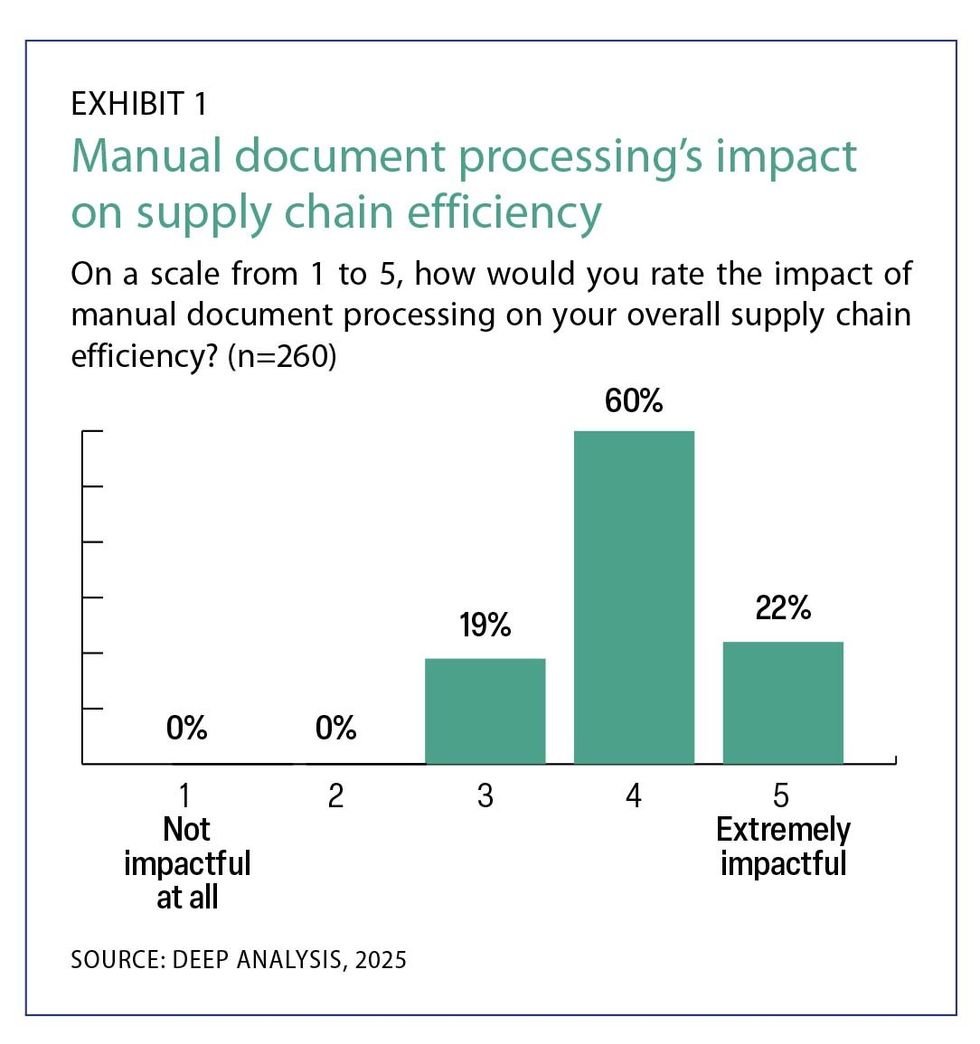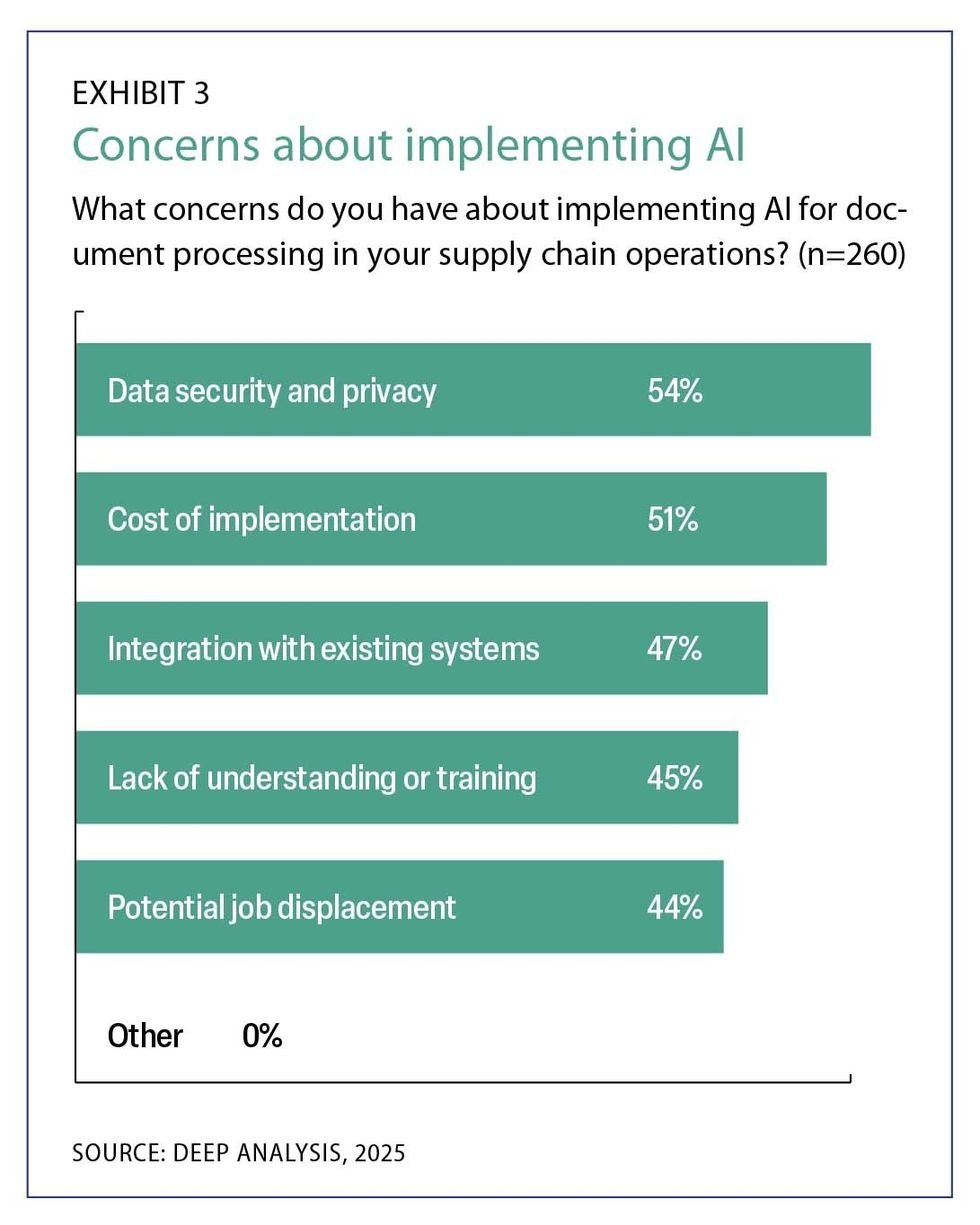AI Insights
Artificial intelligence and agriculture: Producers discuss integrating technology in operations – Enidnews.com

AI Insights
91% of Jensen Huang’s $4.3 Billion Stock Portfolio at Nvidia Is Invested in Just 1 Artificial Intelligence (AI) Infrastructure Stock

Key Points
-
Most stocks that Nvidia and CEO Jensen Huang invest in tend to be strategic partners or companies that can expand the AI ecosystem.
-
For the AI sector to thrive, there is going to need to be a lot of supporting data centers and other AI infrastructure.
-
One stock that Nvidia is heavily invested in also happens to be one of its customers, a first-mover in the AI-as-a-service space.
-
10 stocks we like better than CoreWeave ›
Nvidia (NASDAQ: NVDA), the largest company in the world by market cap, is widely known as the artificial intelligence (AI) chip king and the main pick-and-shovel play powering the AI revolution. But as such a big company that is making so much money, the company has all sorts of different operations and divisions aside from its main business.
For instance, Nvidia, which is run by CEO Jensen Huang, actually invests its own capital in publicly traded stocks, most of which seem to have to do with the company itself or the broader AI ecosystem. At the end of the second quarter, Nvidia owned six stocks collectively valued at about $4.3 billion. However, of this amount, 91% of Nvidia’s portfolio is invested in just one AI infrastructure stock.
Where to invest $1,000 right now? Our analyst team just revealed what they believe are the 10 best stocks to buy right now. Continue »
A unique relationship
Nvidia has long had a relationship with AI data center company CoreWeave (NASDAQ: CRWV), having been a key supplier of hardware that drives the company’s business. CoreWeave builds data centers specifically tailored to meet the needs of companies looking to run AI applications.
Image source: Getty Images.
These data centers are also equipped with hardware from Nvidia, including the company’s latest graphics processing units (GPUs), which help to train large language models. Clients can essentially rent the necessary hardware to run AI applications from CoreWeave, which saves them the trouble of having to build out and run their own infrastructure. CoreWeave’s largest customer by far is Microsoft, which makes up roughly 60% of the company’s revenue, but CoreWeave has also forged long-term deals with OpenAI and IBM.
Nvidia and CoreWeave’s partnership dates back to at least 2020 or 2021, and Nvidia also invested in the company’s initial public offering earlier this year. Wall Street analysts say it’s unusual to see a large supplier participate in a customer’s IPO. But Nvidia may see it as a key way to bolster the AI sector because meeting future AI demand will require a lot of energy and infrastructure.
CoreWeave is certainly seeing demand. On the company’s second-quarter earnings call, management said its contract backlog has grown to over $30 billion and includes previously discussed contracts with OpenAI, as well as other new potential deals with a range of different clients from start-ups to larger companies. Customers have also been increasing the length of their contracts with CoreWeave.
“In short, AI applications are beginning to permeate all areas of the economy, both through start-ups and enterprise, and demand for our cloud AI services is aggressively growing. Our cloud portfolio is critical to CoreWeave’s ability to meet this growing demand,” CoreWeave’s CEO Michael Intrator said on the company’s earnings call.
Is CoreWeave a buy?
Due to the demand CoreWeave is seeing from the market, the company has been aggressively expanding its data centers to increase its total capacity. To do this, CoreWeave has taken on significant debt, which the capital markets seem more than willing to fund.
At the end of the second quarter, current debt (due within 12 months) grew to about $3.6 billion, up about $1.2 billion year over year. Long-term debt had grown to about $7.4 billion, up roughly $2 billion year over year. That has hit the income statement hard, with interest expense through the first six months of 2025 up to over $530 million, up from roughly $107 million during the same period in 2024.
CoreWeave reported a loss of $1.73 per share in the first six months of the year, better than the $2.23 loss reported during the same time period. Still, investors have expressed concern about growing competition in the AI-as-a-service space. They also question whether or not CoreWeave has a real moat, considering its customers and suppliers. For instance, while CoreWeave has a strong partnership with Nvidia, that does not prevent others in the space from forging partnerships. Additionally, CoreWeave’s main customers, like Microsoft, could choose to build their own data centers and infrastructure in-house.
CoreWeave also trades at over a $47 billion market cap but is still losing significant money. The valuation also means the company is trading at 10 times forward sales. Now, in fairness, CoreWeave has grown revenue through the first half of the year by 276% year over year. It all boils down to whether the company can maintain its first-mover advantage and whether the AI addressable market can keep growing like it has been.
I think investors can buy the stock for the more speculative part of their portfolio. The high dependence on industry growth and reliance on debt prevent me from recommending a large position at this time.
Should you invest $1,000 in CoreWeave right now?
Before you buy stock in CoreWeave, consider this:
The Motley Fool Stock Advisor analyst team just identified what they believe are the 10 best stocks for investors to buy now… and CoreWeave wasn’t one of them. The 10 stocks that made the cut could produce monster returns in the coming years.
Consider when Netflix made this list on December 17, 2004… if you invested $1,000 at the time of our recommendation, you’d have $678,148!* Or when Nvidia made this list on April 15, 2005… if you invested $1,000 at the time of our recommendation, you’d have $1,052,193!*
Now, it’s worth noting Stock Advisor’s total average return is 1,065% — a market-crushing outperformance compared to 186% for the S&P 500. Don’t miss out on the latest top 10 list, available when you join Stock Advisor.
See the 10 stocks »
*Stock Advisor returns as of August 25, 2025
Bram Berkowitz has no position in any of the stocks mentioned. The Motley Fool has positions in and recommends International Business Machines, Microsoft, and Nvidia. The Motley Fool recommends the following options: long January 2026 $395 calls on Microsoft and short January 2026 $405 calls on Microsoft. The Motley Fool has a disclosure policy.
Disclaimer: For information purposes only. Past performance is not indicative of future results.
AI Insights
Up 300%, This Artificial Intelligence (AI) Upstart Has Room to Soar

Get to know an artificial intelligence stock that other investors are just catching on to.
One stock that is not on the radar of most mainstream investors has quietly risen by more than 300% since April 2025, moving from an intraday low of $6.27 per share all the way to an intraday high of $26.43 per share in late August. Previously, the stock had peaked at over $50 per share in 2024. What changed? It became an artificial intelligence (AI) stock after suffering in the downturn of the electric vehicle market. Most investors probably haven’t caught on yet, and, until recently, the company may not have recognized the AI opportunity it had, either.
I’m referring to Aehr Test Systems (AEHR -2.81%), and I’ll explain why this company is crucial to the AI and data center industries. There is still a significant opportunity for investors to capitalize on, even if they missed the bottom.
Why is Aehr critical to AI?
Here is the 30,000-foot view. When companies, notably hyperscalers, build massive data centers full of tens of millions, and sometimes hundreds of millions, of semiconductors (chips), they must ensure that they are reliable. High failure rates are extremely costly in terms of remediation, labor, downtime, and replacements. If the company selling the chips has a high failure rate, its competitors can gain traction. Aehr Test Systems provides the necessary reliability testing systems.
Their importance cannot be understated. The latest chips are stackable (multiple layers of chips forming one unit), which allows for exponentially more processing power. However, there is a catch. Many times, they are a “single point of failure.” In other words, if one chip in the stack fails, the entire stack fails. The importance of reliability testing has increased by an order of magnitude as a result. And now Aehr is the hot name that could become a stock market darling again.
Image source: Getty Images.
Is Aehr stock a buy now?
You have probably heard about the massive data centers that the “hyperscalers,” companies like Meta Platforms, Amazon, Elon Musk’s xAI, and other tech giants, are building across the country and the world. In fact, trying to keep up with all of the announcements of new projects would make your head spin. In many cases, the data center campus spans more than a square mile and contains hundreds of thousands of chips. Elon Musk’s xAI project, dubbed “Colossus,” is said to require over a million GPUs in the end.
As shown below, the number of hyperscale data centers is soaring with no end in sight.
Source: Statista.
This number increased to more than 1,100 at the end of 2024, nearly doubling over the past five years. The demand is primarily driven by artificial intelligence, which is why Aehr is now an “AI stock” — and the reason its share price took off and could continue higher over the long term.
Aehr still faces serious challenges. Its revenue fell from $66 million in fiscal 2024 to $59 million in fiscal 2025. It slipped from an operating profit of $10 million to a loss of $6 million over that period as the company undertook the challenging task of refocusing its business. However, investors who dig deeper see a very encouraging sign. The company’s backlog (orders that have been placed, but not yet fulfilled) jumped to $15 million from $7 million. Aehr also announced several orders received from major hyperscalers over the last couple of months.
It’s challenging to value Aehr stock at this time. The company is in a transition period, and while the AI market looks hugely promising, it is still a work in progress. In its heyday, the stock’s valuation peaked at 31 times sales, and as recently as August 2023 it traded for 24 times sales compared to 12 times sales today. The AI market could be a gold mine for Aehr, and Aehr stock looks like a terrific buy for investors.
Bradley Guichard has positions in Aehr Test Systems and Amazon. The Motley Fool has positions in and recommends Amazon and Meta Platforms. The Motley Fool has a disclosure policy.
AI Insights
Augment AI startup secures $85M for logistics teammate

Given these persistent challenges, could artificial intelligence (AI) be the answer? By automating repetitive tasks—such as invoice validation, exception alerts, and document processing—AI has the potential to streamline workflows, reduce errors, and free up teams to focus on strategic decision-making.
A recent report by research firm Deep Analysis, sponsored by document automation specialist Hyperscience, sheds light on the current state of AI readiness in T&L back-office functions. Titled “Market Momentum Index: AI Readiness in Transportation and Logistics Back-Office Operations,” the report drew on findings from a survey of T&L professionals to reveal both the challenges and opportunities for automation and AI adoption. (For more information about the research and methodology, see sidebar, “About the research.”)
This article summarizes some of the key findings and offers some actionable recommendations for supply chain professionals looking to harness the power of AI to drive efficiency and competitiveness.
THE CRITICAL ROLE OF THE BACK OFFICE
Back-office operations are the administrative core of supply chain processes, encompassing tasks such as order processing, inventory management, billing, compliance documentation, and communications with vendors and carriers. While these tasks are not visible to end consumers, they are vital to maintaining the smooth flow of goods and ensuring on-time deliveries. Furthermore, these operations are typically complex, involving numerous transactions and partners, and, as a result, are often plagued by fragmented processes, duplicated efforts, and misaligned data. Yet, most transportation and logistics companies still depend on manual processes and paper-based systems for their back-office operations, which often lead to errors, delays, and inefficiencies.
For example, the industry relies heavily on documents such as invoices, bills of lading, shipment tracking forms, and compliance records. Many organizations, however, use manual or semi-automated processes to manage these documents. Survey respondents indicated that the manual handling of supply chain documentation is a significant challenge that can have a large impact on overall supply chain efficiency (see Exhibit 1). For instance, missing or incorrect paperwork can cause customs delays, incur fines, or disrupt critical supply chain timelines. Additionally, document handling involves multiple touchpoints, which increases the risk of errors and operational delays. Furthermore, the lack of standardized document formats complicates data sharing and collaboration.
The survey found that many companies have implemented digital tools such as enterprise resource planning (ERP) systems, supply chain management (SCM) systems, transportation management systems (TMS), and warehouse management systems (WMS). These systems were initially marketed as comprehensive solutions capable of automating business processes, improving efficiency, and providing real-time data visibility. However, their effectiveness has been limited by several key challenges. First, high implementation costs and complex integrations often lead to partial deployments, where critical functions remain unautomated. Second, rigid system architectures struggle to adapt to dynamic business needs, forcing employees to rely on manual workarounds—particularly in Excel—to fill functionality gaps. This reliance on spreadsheets introduces high data-entry error rates, inconsistent reporting, and limited data visualization capabilities. Additionally, ineffective user training and resistance to change further hinder adoption, leaving many organizations unable to fully leverage these systems. As a result, despite their potential, ERP, WMS, and similar tools frequently fall short of delivering the promised operational transformation.
THE GROWING INTEREST IN AI
Given the lack of success with other technology tools, there is a perception that supply chain organizations in general—and T&L firms in particular—might be resistant to or uninterested in AI. So it came as a bit of a surprise that the survey results indicated a growing interest in automation and AI within the T&L sector. Over 70% of respondents expressed a willingness to invest in AI-optimized systems, recognizing the potential for these technologies to transform back-office operations.
Of those respondents whose organizations were already using AI, 98% said they view the technology as useful, important, or vital. As Exhibit 2 shows, these respondents are currently employing AI to accomplish a wide range of goals. The report highlights several key areas where AI adds value, such as:
1. Improved decision-making (31%): AI can analyze large volumes of complex data—such as real-time traffic patterns, weather conditions, shipment tracking, and historical trends—to optimize supply chain decisions.
2. Error reduction (28%): For back-office tasks such as data entry, invoice processing, and document management, AI can automate repetitive processes, drastically reducing human error.
3. Enhanced data quality (37%): AI improves data quality by ensuring consistency, standardization, and accuracy, making the data more reliable for decision-making purposes.
Going forward, automation and AI have the potential to reshape the industry, enabling companies to reimagine workflows, prioritize sustainability, and enhance collaboration.

BARRIERS TO AI ADOPTION
Despite the clear potential of AI, significant barriers to adoption remain. The survey respondents reported several concerns about implementing AI for back-office processes (see Exhibit 3). The most common concerns include:
1. Data security and privacy (54%): Transportation and logistics companies handle a large volume of sensitive data, including customer information, shipment details, and payment records. Ensuring robust security protocols and compliance with privacy regulations is critical for any AI implementation.
2. Cost of implementation (51%): AI technologies require considerable upfront investment in both hardware and software, and many smaller logistics firms or those with tight margins may find it difficult to justify this expense.
3. Integration with existing systems (47%): Many logistics companies still rely on traditional TMS and ERP systems that were not built with AI in mind, requiring substantial and extensive investment in infrastructure upgrades.

ESSENTIAL STEPS
No matter how powerful a technology is, its effectiveness in the real world of business is only as good as the planning and execution of a transformation project. As companies look to implement AI, they must make sure to take essential steps such as standardizing data formats, investing in workforce training, and fostering industrywide collaboration. The report concludes with several recommendations for companies looking to adopt AI and automation in their back-office operations, including:
1. Invest in AI training: Providing employees with training on AI tools and systems will help bridge the knowledge gap and increase adoption rates.
2. Focus on incremental implementation: Starting with pilot projects allows companies to assess the technology’s return on investment (ROI) and build confidence in AI technologies before large-scale deployment.
3. Develop industry standards: Collaborate with industry groups to establish standardized document formats and processing protocols, reducing inefficiencies and errors.
4. Prioritize integration: Select AI solutions that integrate seamlessly with existing systems, minimizing disruption during the transition.
5. Monitor emerging technologies: Stay informed about advancements in AI, such as intelligent document processing (IDP) and robotic process automation (RPA), to remain competitive.
THE TIME IS NOW
The transportation and logistics sector is at a pivotal moment, with significant opportunities to leverage AI and automation to address long-standing inefficiencies in back-office operations. While challenges such as integration, cost, and training remain, the industry is moving steadily toward broader adoption of digital and AI-based solutions. By addressing these barriers and focusing on incremental, strategic implementation, companies can unlock the full potential of automation and AI, driving efficiency and competitiveness in an increasingly complex and indeed volatile market.
Some may be understandably skeptical of AI’s ability to truly transform back-office operations, particularly given past failures to digitize paper-based processes. Certainly, no technology is perfect, and its effectiveness is dependent on how well the organization plans and executes its implementation. However, it’s important to note that huge advances have been made in the ability of AI to read, understand, and process document-based processes. As a result, AI has the potential to make relatively light work of anything from invoices to bills of lading, providing accuracy levels typically far higher than were a human to do the work manually.
For supply chain professionals, the message is clear: The future of T&L lies in embracing digital transformation, investing in AI, and fostering collaboration across the industry. The time to act is now.
About the research
In 2024, the document automation company Hyperscience and the Council of Supply Chain Management Professionals (CSCMP) partnered with the research and advisory firm Deep Analysis on a research project exploring the current state of back-office processes in transportation and logistics, and the potential impact of AI. The report, “Market Momentum Index: AI Readiness in Transportation and Logistics Back-Office Operations,” is based on survey results from senior-level managers and executives from 300 enterprises located in the United States. All of these organizations have annual revenues greater than $10 million and more than 1,000 employees. The survey was conducted in November and December of 2024. The full 21-page report can be downloaded for free at https://explore.hyperscience.ai/report-ai-readiness-in-transportation-logistics.
-

 Business1 week ago
Business1 week agoThe Guardian view on Trump and the Fed: independence is no substitute for accountability | Editorial
-
Tools & Platforms4 weeks ago
Building Trust in Military AI Starts with Opening the Black Box – War on the Rocks
-

 Ethics & Policy1 month ago
Ethics & Policy1 month agoSDAIA Supports Saudi Arabia’s Leadership in Shaping Global AI Ethics, Policy, and Research – وكالة الأنباء السعودية
-

 Events & Conferences4 months ago
Events & Conferences4 months agoJourney to 1000 models: Scaling Instagram’s recommendation system
-

 Jobs & Careers2 months ago
Jobs & Careers2 months agoMumbai-based Perplexity Alternative Has 60k+ Users Without Funding
-

 Education2 months ago
Education2 months agoVEX Robotics launches AI-powered classroom robotics system
-

 Funding & Business2 months ago
Funding & Business2 months agoKayak and Expedia race to build AI travel agents that turn social posts into itineraries
-

 Podcasts & Talks2 months ago
Podcasts & Talks2 months agoHappy 4th of July! 🎆 Made with Veo 3 in Gemini
-

 Education2 months ago
Education2 months agoMacron says UK and France have duty to tackle illegal migration ‘with humanity, solidarity and firmness’ – UK politics live | Politics
-

 Podcasts & Talks2 months ago
Podcasts & Talks2 months agoOpenAI 🤝 @teamganassi





















